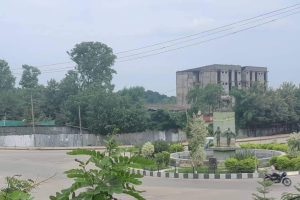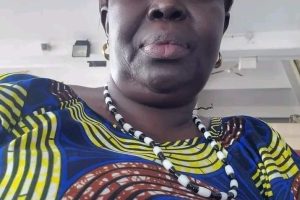By Lul Gatkuoth Gatluak,
Although the implementation of peace had kicked off after the return of the SPLM-IO’s Advance Team to Juba, one would assert that the government of South Sudan hasn’t escaped the danger yet.
Based on the way its guided by its novice leader, it’s easy to recognize its future is still heading into another unpredictable uncertainty if the imposition of the 28 States is not duly reversed.
The Joint Monitoring and Evaluation Commission (JMEC) now possess the tougher role yet as the ball is rolling at their hands whether to let it reach the net and score or miss-kick it into outfields and loss the game.
This creates a worrying sense among some of the peace loving South Sudanese and elsewhere in the region since it could easily be identified that the Implementation of the Compromise Peace Agreement (ICPA) stands in limbo. As such one would argue that these ICPA would burst if the JMEC, IGAD and all other players do not respond promptly.
However, based on the handling of the South Sudanese conflict by IGADD and these other bodies which have been overseeing the situation, its virtually unrealistic to see any other substance they got different from what they had already offered.
A lot of people in East African region and in South Sudan in particular have been exhausted by the leniency of these regional blocs who go by the demands of South Sudan government and again who do not issue any concrete consequence despite many agreements and deadlines that have so far been violated or broken.
Some of these agreements started from 24/01/2014 when the peace talk started in the Ethiopian capital, Addis Ababa. However, the government of South Sudan had violated them all resulting into unnecessary deaths of innocent lives.
Based on that experience, any peace loving South Sudanese would have a good reason to worry that the current JMEC deadline which stated that “the new transitional parliament will pass the amended transitional constitution on the 19th and 20th of January by the President will not be met due to Salva Kiir’s nullify violation of agreements.
Therefore, its the purpose of this article to look at the ongoing controversy regarding Salva Kiir’s Presidential Decree number 36 dated October 2, 2015.Kiir’s 36 Presidential decrees was designed by him and his cronies to create 18 more new States out of the already ten existing ones.
It was that decree that would possibly bring the number of States in South Sudan to unfeasible stand provided that those who opposes it caves in. Before diving deep into this diverge issue, one would first like to praise the former Cabinet Affairs Minister Deng Alor Kuol and former Governor of Unity State Taban Deng Gai who is currently serving as the chief negotiator for the armed opposition. Their stance against the creation of 28 states during SPLM mislay convention on Thursday January 7, 2016 in Juba is unwavering.
They draw a huge support from the wider public because in a time when amalgamation is seen to be the only answer by most western governments due to lack of funding and austerity measures as a result of financial crises, South Sudanese are seeing their leader dishing the country’s economy into irreparable mode.
Economic thinkers throughout the country would argue that the problem of more states is not only seen by many as a tool to jeopardize the implementation of the Compromise Peace Agreement for resolving the conflict but it is economically not equitable imagining that more states would mean more governors, ministers and so on.
As that could be the case, one would wonder where the funding is going to come from given that the police force or the army are not getting paid as they should.
According to Mr Deng Gai and Mr Deng Alor, their view of creating 28 States is that it is unnecessary and it will complicate the implementation of the agreement. I as the author of this article am in line with them. Below are some implications the 28 States would generate if Salva will be allowed to impose 18 more States on the people of South Sudan
To be precise and frank, the issue of 28 States is adding fuel to already burning country. Since the outbreak of the crisis in South Sudan in 2013, the South Sudanese people had been sharply divided between ethnic-lines.
Momentarily, this division is being widening by the creation of 28 States, an idea Salva Kiir had stolen from the rebel leader Dr. Riek Machar who, in May 2014, proposed that the South Sudan original ten States must be expanded by adding 11 states which Sudanese government had created in 1997.
Riek justified his proposal which he said was based on the “British colonial Districts”. According to him, the boundaries between states have clear delineated borders that were demarcated before 1st January 1956.
When Riek revealed the proposal and availed it to IGAD mediators, Salva Kiir and his cohorts had repeatedly rejected the proposal as a rubbish. Even the idea of Federalism Dr. Riek had also proposed to be adopted as the system of governance in an awaited new transitional government of national unity was swiftly rejected.
Surprisingly, on October 2, 2015, Salva Kiir surprised the whole world by issuing a decree creating 18 more States after the peace had already been signed. The move surprised everybody because during the negotiation, Salva was more adamant by not supporting the creation of more States.
It is hard to guess what had made him changed his mind this time around? One would assume that he might have been persuaded by his kin folks that Riek will win the heart of South Sudanese people once transitional government of national unity is put together for his proposal of 21 States.
Secondly, Salva might have been engineered by some influential tribesmen especially the Jieng—council of elders to create more States base on Dinka interest in the country. Unlikely for him and his cronies, the move he had taken is very controversial, which is the reason why when the news for the creation of more States was announced, the South Sudanese as well as non-South Sudanese alike, voiced their concerns.
However, his supporters perceived the news with great jubilations and celebrations while opponents of it met it with condemnations and dismay. The discussion was not healthy in all counts. To his backers, “banydit aci goth areet”, given that he had annexing territories.
However, to his opponents, there is a great discontent with the annexation of land from some ethnic groups and 28 States creation will continue to endanger inter-ethnic conflicts in foreseeable future. One could not see any reason why these newly created 28 States will not bring skirmishes between sections, clans or tribes once it’s indeed imposed.
The plan is so hazardous and it’s an abomination to those whose land is being annexed. Since October 2, 2015, people have been arguing daily on the issue of 28 States. Individuals as well as groups rejected the notion of 28 States very vigorously. Among the organizations which rejected 28 States’ creation were SPLM-IO, SPLM-former Detainees, SPLM-DC and many other entities including individuals and international institutions.
In a brief analysis given by Douglas H. Johnson an expert in South Sudan history, Johnson indicates that “there is no enough information on the exact location of the boundaries.” For example, in the State of Upper Nile, which has been divided into three States, (Latjor) for Nuer, (Western Upper Nile) for Shilluk and Dinka dominated (Eastern Upper Nile), Shilluk land of Malakal has been given to Dinka State of Eastern Upper Nile instead of being included in Shilluk Western Upper Nile.
Previously between 2005 and 2011, Shilluk and Dinka clashed multiple times over the ownership of Malakal during the (CPA) celebrations. Currently, Shilluk are protesting the annexation of their land to Dinka. They have written extensively to the world’s powerful bodies such as United Nations, European Union, African Union, IGAD and its partners; but most importantly to Salva Kiir himself persuading them to let Salva reverse his infamous decree. Up to the moment, there is no positive respond toward their call for reversal.
Despite that Salva seems to defy all voices that clamors or calls upon him to recall the decree. One would like to assert that the government of South Sudan is ignorant for throwing their grievances away as rubbish. It is a wreck without immediate repair.
Beside Shilluk land, part of Nuer land is also annexed to Dinka in Eastern Upper Nile. Even the Upper Nile oil has been given to Dinka. Moreover, Maban in the East has been included in the so-called Eastern Upper Nile State. Worst still are the Burun and Koma who have previously been parts of Pagak, Maiwut and Longechuk, had now been included to Dinka State.
Its really hard not to find a clue about Katin, Kisgille, Dajo and other towns that lined up with Pagak, Maiwut and Longechuk respectively can be taken away to be merged with Eastern Upper Nile of Dinka.
In unity State which he has been divided into three States included, Northern Liech State, Southern Liech State and Ruweng State, Nuer land of Mayom and other surrounding areas attached to Dinka counties of Pariang and Abiemnhom has been annexed to Dinka Ruweng State.
The oil fields have been taken from Nothern and Southern Liech States and annexed to above mentioned Dinka territory, this area is an awaiting time-bomb. There is no doubt that Nuer will resist giving their ancestral land away to their neighbors because someone has said so.
Then in Jonglei State which he has now been divided into four States, Jonglei, Wesrtern Bieh, Eastern Bieh and Boma; each one of these States is roughly defined by ethnicity. For example, in Western Bieh he had created, it contains many Dinka settlers among the Gawar Nuer, and the border between Bor District and Eastern Bieh has had many mixed villages.
Hence, current division that want to separate those who have been collaborated may danger their collaboration. Moreover, former Pibor County that had now been established as Boma State, had different groups with Murle being the majority over Anuak of Pochalla and Anuak who is minority in Akobo need to stick together with their brothers in Pochalla.
Such a division also has another question mark from Anuak people.
Johnson further stated, “There is no clear pattern in the designation of new States.” To him some of the new State boundaries run along the old provincial boundary lines. For instance, Western boundaries of the two liech States, follow the old upper Nile-Bahr el-Ghazal boundary.
The northern boundaries of Terekeka, Amadi, Mandi and Ghudwe States follow the old Equatoria- Bahr el-Ghazal boundary. Then the northern boundaries of Terekeka, Imatong and Namorunyang States follow the old Equatoria-Upper Nile boundary.
However, Johnson indicates some older colonial ethnic boundaries are retained. He listed Imatong, Namorunyang, and Bor States as those States that appear to follow the old colonial lines as of 1.1. 1956 Districts. In Bahr el Ghazal, Aweil North and Aweil West counties formerly part of Northern Bahr el Ghazal State, have now been combined with Raga County to form Lol State.
That State has some disputes between different ethnic groups that live there. Johnson continue that new State boundaries will increase internal conflicts, such as the one between Apuk and Aguok in their newly separate State of Gogrial East, or between the feuding sections in Western and Eastern Lakes States.
Another uneasy corridor is the cross-border between Lakes and Unity States, oftentimes, raids occurred between Southern Liech and Western and Eastern Lakes, those kind of skirmishes will eventually increase despite 28 States’ creation.
Base on Douglas’s analysis, one may conclude that, the issue is very complicated, which mean, without genuine multi party dialogue, 28 States will greatly increase the possibility of a violent eruption that would destabilize the country again.
As the reader may aware, during Comprehensive Peace Agreement (CPA) implementation, technical Adhoc Committee were formed to precisely demarcate and delineate the North-South borderline as of 1st January 1956 with technical assistance from relevant national and international expertise. Although these committees were faced with a lot of problems but their appointment was an effective move toward CPA implementation. Equally, Southern Sudan ten States were demarcated base on the same formula.
Today if South Sudanese people want to create more States as such proposal would be on the majority of people’s mind and heart, an Ad hoc technical committee could be established first to provide detailed cartographical and mapping with references from Southern Sudan borderlines as of 1st January 1956. South Sudanese nationals and international experts can work together to map the country and demarcate its boundaries after all parties agree on the number of the States the country would need to create.
Salva Kiir’s controversial 28 States, is a trouble in awaiting given that there is no clear information on the location of the boundaries of the new States and counties. There is more confusion than there is solutions, given that Salva did not give details of why he created 18 more States other than saying “SPLM/A vision was to bring towns to people.” Well, “SPLM vision was bringing towns to people” but not dividing South Sudanese people on their ethnicity or annexing some ethnic groups’ land and give it to others.
Furthermore, comprehensive census of South Sudanese communities has not been counted, and nobody have any clue of an accurate representation of the populations of each State and County. Nobody know how many people have been displaced from their original homes and how many have migrated to different locations.
One do not think Salva has any idea of how many people can be counted for and qualify to be given a State. He also should have first studied the cultural context of interaction between each ethnic group in the country and see if dividing people base on their ethnicity could actually help the country stability.
In some extent, the division will increase hatred among various ethnic groups. Ethnic conflicts are regularly started by many things including distribution of resources where each group can be determined by their ethnicity especially who gets what and how much is being determined by one ethnic group.
In a collection study conducted by some scholars on ethnicity and boundary maintenance, (Vermeuelm amd Govers; 1994) indicate that ethnic group and boundary maintenance is problematic.
In a recent work, Gescjoere and Nyamnjoh (2001) emphasis a notion of autochthony, where each ethnic group is capable of arousing strong emotions regarding the defense of home and their ancestral lands whenever an outsider had intruded.
Therefore, ethnic division Salva Kiir is seeking carrying a political disorder. The hostility will start with the land issues and later on resources at a local level. We need to create a fundamental inter-ethnic harmony mechanism that will help tackled the basic means that will unite us. It’s still fresh in our mind that current conflict began as a political power struggle coupled with implications on ethnic conflict exacerbated by the absence of a collective identity in the country.
The government’s failure to develop an efficient system to distribute wealth and resources has exacerbated ethnic divides and this by far will be increased by this ethnic division.
Salva Kiir government does not feel threatened, he is willing to ignore popular protest and foreign criticism toward such stolen vision. He is standing firm to really impose these artificial States no matter what. Those who criticize him on the issue of 28 States are his enemy.
For instance, members of the parliament in his rotted government are facing dismissal for the reason that they disagree with his impose States agenda. It’s now up to JMEC to get serious if they want the peace implementation to move forward. Many people particularly those whose land is being annexed will hardly surrender to Salva Kiir and his backers’ land grabbing motto.
Oftentimes, imposition of a system on a regional or territory base has never been successful because people can always resist the notion. Therefore, establishment ignited by the few individuals without the consent of the people remain the decision of the few and it’s lack effectiveness due to the fact that it carry poor institutional structures especially when interest of all people had not been harmonized. The generally acceptable norms is that ethnic composition of a country increases the likelihood of conflicts, than States with mix-ethnic groups that are living under the guidance of supreme law of the land.
This means heterogeneous State usually base its policies on political parties structure, that makes it easier for most of the country citizens to get access to power given that individuals are chosen because of their potentiality rather than their background or ethnicity.
In summing, for sustainable peace to be achieved in South Sudan, JMEC leadership need to persuade Salva Kiir to reverse 28 States decree. This is when transparency and smooth political dialogue will flourish. Profoundly, the imposition of 28 States is a violation of Compromise Peace Agreement and dangerous move that will cause second round of violence in South Sudan in the near future.
Although the stakes are high in terms of peace implementation, yet, issue of imposing uncompromised States will easily leads to conflict and this conflict will lead to disintegration of the regions leave alone rekindling of the civil war.
So, in order to create more States in the country, let all parties in the country seat and determine the number of the States. However, States aren’t going to be created on ethnic lines. This will keep us divided for couple more decades before we should embrace our livelihood.
What we need in South Sudan is not ethnic division, what we need is federal system where each region or territory will have an autonomy within a whole structured federation. If many countries around the world that are made up of tribal segmentation could learn how to live together as brothers and sisters, why can’t we learn how to live together?
Very Respectively:
Lul Gatkuoth Gatluak
The author is a political commentator: he should be reached through lulgatluak7@gmail.com or simonlul2000@yahoo.com
Click her







